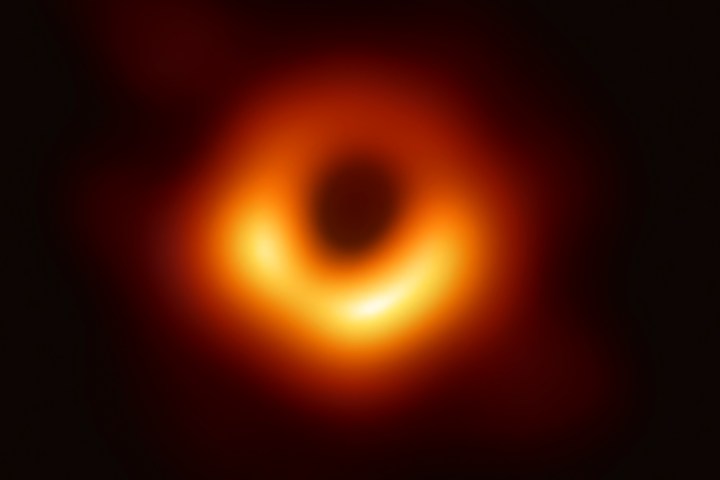Last year, the Event Horizon Telescope (EHT) project made history by achieving something that was thought to be impossible: It captured an image of a black hole.
That was the culmination of the EHT project and also its biggest achievement to date, but it certainly wasn’t the end of the project.
In a virtual conference with reporters last week, the EHT researchers talked about what’s next for the project and how current global conditions are affecting their work.
A tale of two black holes
The project is actively examining not only M87, the famous supermassive black hole which was imaged last year, but also at Sagittarius A*, the supermassive black hole at the heart of our galaxy. The data collected over the last years is still being analyzed, with new techniques in use which could help give an even better look at the black holes’ event horizons.

And the team is working to add more telescopes to the project, which would improve the imaging power of the array as a whole. They want to add not only ground-based telescopes but also a space-based antenna, which can detect the faint signals which would be disrupted by the Earth’s atmosphere.
As part of their efforts, the team recently discovered a new method for observing black holes which should allow them to capture these monsters in “razor-sharp” images in the future.
Collaborative science in the time of coronavirus
The scientists also shared how the global outbreak of coronavirus is affecting their research. They have had to cancel the planned observations for the project this year due to safety concerns for their team members, who would have had to visit the different observatories in the array in person, which the team described as “heartbreaking.”
The project typically takes observations once per year, so the 2020 observations have been canceled and the next set of observations will likely take place in 2021. The observations can only take place yearly due to the need for good observing weather (i.e. cloudless skies and low water levels in the atmosphere) to occur simultaneously in both the locations for the primary telescopes in the northern and southern hemispheres, which tends to happen around March and April.

However, other work such as the analysis of existing data has been able to go ahead. “We’re able to do a lot of the work that we’re committed to,” Sheperd Doeleman, founding director of the Event Horizon Telescope, said. “We spend a lot of our lives on Zoom anyway, because of the nature of this collaboration and its far-flung membership. In that sense, we’re able to continue a lot of the analysis we’re working on.”
Doeleman also said that the EHT project and its achievements could be a model for the kind of collaborative achievement that is possible in a connected world: “We did this only by sharing resource across borders and across fields. Especially in these troubling times, it’s an encouraging feeling to have been able to do that, to get everybody together to focus on what we thought was an impossible problem.”
How to video a black hole
The next big aim for the project is to use the expanded array to allow the scientists to capture the first movies of black holes. When it comes to viewing the way that a black hole changes over time, the enormous size of M87 gives an advantage in allowing scientists to capture it in images or video.
“For M87, which is a monster, it’s six and a half billion times the mass of our sun,” Doeleman said. “The time it takes to orbit around the black hole at the closest orbit that matter can move around is on the order of days, or more likely a month or so.
“So if you wanted to see the black hole evolve before your eyes, you would do it with time-lapse photography. You take an image one week, and then a week later, and then a week later, and if you did that over a few months, you would have a movie you could playback which would show you how the black hole is changing its shape, how the plasma around the black hole is being shocked and dragged around, how jets are being launched from the north and south pole.”

When it comes to the black hole in the center of the Milky Way, however, observing it over time is much more difficult due to its comparatively small size. “Sagittarius A* is a completely different animal,” Doeleman explained. “It’s four million solar masses, so it evolves so quickly that objects orbit around it in half an hour. Trying to capture an image of that is unfortunately like opening up your lens cap and exposing your film while a runner sprints by. It’ll be very blurry.
“But if we can take snapshots, then we’ll be able to stitch those together to make a movie. And for that, we have people developing new algorithms. Instead of combining all the data from one night, they look at snapshots and then make sure they are fluid and continuous as we construct a movie.”
By using complex algorithms, the scientists are able to squeeze more useable information out of the data that they collect, leading to both more sharp and accurate images and to the possibility of new formats such as movies.
A sense of wonder about the universe
Building on the immense public interest in the black hole image generated last year, the team and the organizers, the National Science Foundation, are hopeful that further work can help bolster public support for astronomy projects.
“Scientific discovery has immense benefit for society and inspires a sense of wonder about the universe,” said Peter Kurczynski, program director at the National Science Foundation. “And few things capture the imaginations of those who are interested in the universe like black holes.”



